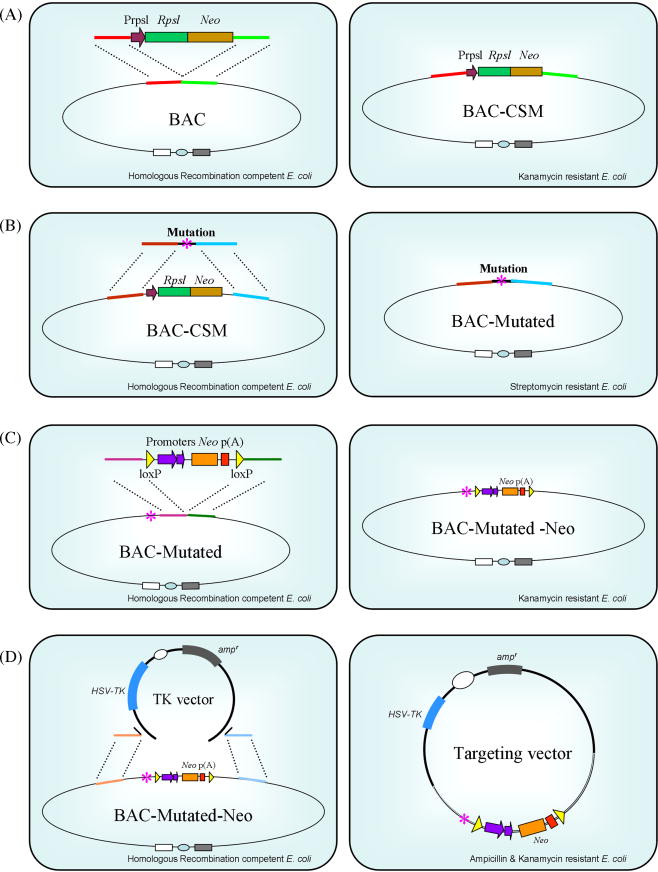Fig. 3.
Bacterial homologous recombination in the construction of targeting vectors. (A) Left, a homologous recombination-competent bacterial strain harboring a BAC vector is shown. An RpsL-Neo cassette, as selection marker and counter selection marker (CSM) genes, is introduced via electroporation. The RpsL-Neo cassette is flanked with short DNA sequences (red and green) that are homologous to the target gene locus in the BAC vector. Right, selection for kanamycin resistant bacterial clones (conferred by Neo) identifies BAC vectors that have the RpsL-Neo cassette inserted into the designated gene locus through homologous recombination (BAC-CSM). (B) Left, a DNA fragment containing a subtle mutation (asterisk) and DNA sequences (brown and blue) that are homologous to the target gene locus in the BAC-CSM vector replaces the RpsL-neo cassette. Right, streptomycin selection for mutant BAC clones (resistance is conferred by the absence of RpsL) (BAC-Mutated). (C) Insertion of a neo-cassette as in (A) and (B). The neo-cassette is driven by dual prokaryotic and eukaryotic promoters and is flanked by loxP sites. This configuration enables the neo gene to be used to select for antibiotic resistance in E. coli (kanamycin) as well as in ES cells (geneticin). (D) Left, the modified gene locus in the BAC vector (BAC-Mutated-Neo) is subcloned into a gene targeting vector (TK Vector) through homologous recombination. The backbone of the targeting vector contains HSV-TK and ampicillin resistant (ampr) genes. Right, ampicillin and kanamycin selection identifies targeting vectors that contain both the plasmid backbone and the modified gene locus.

